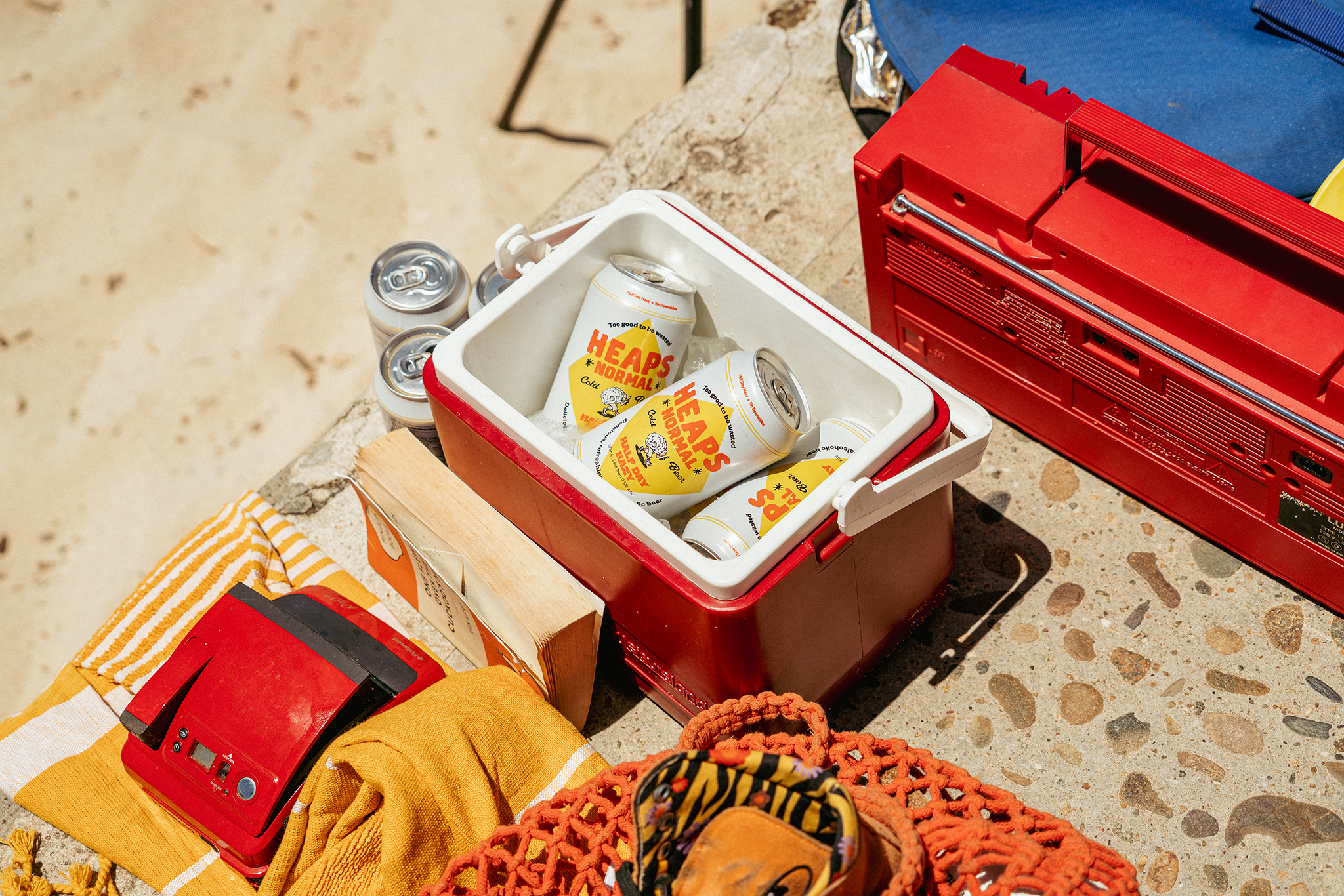
Heaps Normal launches Half Day Hazy

This month, Heaps Normal’s third core-range beer – the Half Day Hazy – will land in pub, bar and restaurant fridges and on bottle shop shelves around Australia. The super drinkable brew is named in honour of ‘National Half Day Day’ – Heaps Normal’s inaugural national holiday initiative on the 9th December – which encourages Aussies to take the arvo off to celebrate the small wins of the year.
Heaps Normal’s Half Day Hazy pale ale is the independent Aussie brewer’s most ambitious non-alc beer yet – a full-flavoured non-alc hazy style beer with a tropical, ‘sunshine-in-a-can’ flavour profile and contains less than 0.5% ABV.
“The Hazy Pale Ale is a super drinkable, juicy beer, jam-packed with delicious hop flavour. It’s like an instant holiday in a can, and the most big-flavoured non-alc beer we’ve ever brewed. We’re so excited to put our feet up and pull a few of these from the esky this summer,” says Heaps Normal’s co-founder and Head of Product Ben Holdstock.
To celebrate National Half Day Day on 9th December, Heaps Normal is giving away over 5,000 tins of its new Half Day Hazy at 60+ participating venues around Australia, including at P&V Wine & Liquor Merchants (throughout Sydney), Icebergs (Bondi Beach, NSW), Lulie St Tavern (Abbotsford, VIC), The Eltham (Northern Rivers, NSW), Belle’s Hot Chicken (Sydney + Melbourne), The Alby (Canberra, ACT), The Triffed (Newstead, QLD), The Carrington (Surry Hills, NSW), The Warren View (Enmore, NSW) and The Ship Inn (Newcastle, NSW) .
“We all deserve an early knock-off sometimes so from here on out, we’re officially coining the 9th of December as ‘National Half Day Day’. Notify your manager and grab your work buddy or your best mates and celebrate the small wins of the year – you’ve earned it,” says Heaps Normal’s Head of Brand, Peter Brennan.
In the lead up to the release of the Half Day Hazy, Heaps Normal rallied 40 publicans, bartenders, hospitality workers and employees for a blind taste test, to see if they could accurately guess which of three beers – including the non-alcoholic Half Day Hazy, a full-strength Hazy-style beer from an independent Aussie brewer, and a mid-strength Hazy-style beer by an independent Aussie brewer – was non-alcoholic. More than half (55%) could not correctly identify which of the samples was non-alcoholic.
Holdstock says taking on a hazy style reflects Heaps Normal’s goal to challenge conventional thinking about what a non-alc beer can be.
“We want to brew non-alc versions of the beers we love drinking all the time. Hazy styles typically are lower in bitterness, and so they lend themselves beautifully to a wider range of beer drinkers looking for something flavour-driven but refreshing. By keeping our Hazy brew really hoppy, we’ve retained that really tasty, full-bodied mouth feel of a full-strength hazy style, without the downsides,” says Holdstock.
“This is one you can share with your oldies at Christmas… and watch their mouths drop when you tell them it’s non-alc.”
The Hazy Pale Ale adds to Heaps Normal’s existing stable of non-alc beers, which includes the brand’s premiere Quiet XPA brew, and Another Lager, which launched in early 2022. The release of the Hazy comes less than three months after the Quiet XPA was named World’s Best No & Low Alcohol Pale Ale by the prestigious World Beer Awards, and 2.5 years since the independent Australian beer brand launched.
Heaps Normal released its 0.5% ABV Quiet XPA in July 2020, quickly finding favour in the craft beer community and beyond for producing a great-tasting non-alcoholic beer. The brand’s products have gone on to be stocked by more than 4,000 venues and stockists around the country.
Over the past 15 years, alcohol consumption has decreased in Australia, from 10.8 litres per capita per year down to 9.4 litres, the lowest seen in 50 years. Similar trends have been seen globally. Despite this, the National Health Survey 2020-21 indicated one in four adults aged 18 years and over exceeded the Australian alcohol consumption guidelines, with men more likely than women to have exceeded the limits in the guidelines. Over a quarter of men were consuming more than 10 standard drinks a week.



